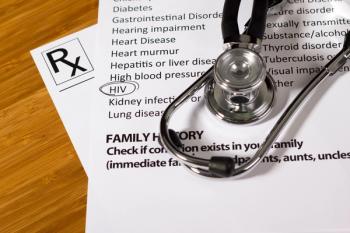
- Drug Topics July 2019
- Volume 163
- Issue 7
Gottlieb on creating space for opportunity and innovation
At the 2019 Asembia Specialty Pharmacy Summit, former FDA Commissioner Scott Gottlieb discussed advances within the agency during his tenure.
In April,
Gottlieb discussed those changes and how they will help implement sound regulations and policy moving forward.
On gene therapy:
“We had to rewrite the rules for how we were going to approach these new technologies and really lay the foundation for what the regulatory architecture would look like moving forward. In respect to gene therapy, a lot of the issues are not on the clinical portion of the review. These gene therapy products are so effective, you can often determine clinical effectiveness on a very small series of patients.
“But there are safety issues: how durable will the treatment effect be? Will there be off-target effects? Those issues relate less to the clinical performance that is assessed in any premarket study and more to the product features and the vector itself that is delivering the gene. That is, how the gene gets set and sorted, and any manufacturing issues related to that.
Trending:
“It’s exactly inverted from traditional drug development where approximately 80% of the complexity and challenge for the FDA is the clinical portion of the review and 20% is the CMC, or the chemistry, manufacturing, and controls portion of the review. When it comes to these gene therapy paradigms, 80% of the complexity for the agency is the product portion and only 20% is on the clinical portion.
“This lends itself to a whole new paradigm where you can use the framework of accelerated approval to allow these products to come to market more quickly based on small amounts of clinical data, recognizing that you aren’t going to answer all the longer-term questions in any reasonably-sized premarket setting. But, you have much more robust authority to require postmarket follow-up of these products, closely monitoring the patients under that legal framework.”
On cell-based regenerative medicine:
“With cell-based regenerative medicine, we promulgated a policy to establish a right mind about when a cell, taken out of your body and manipulated, could become a drug. That existed in law and regulation, but it never existed in practice if the agency hadn’t drawn a bright line and started to vigorously enforce around that line. We were seeing rapid growth in clinics, all marketing different stem cell products-some with really tragic outcomes. So we put out that guidance and started taking enforcement actions establishing that bright line.
At the same time, we recognized that a lot of innovations happen in small academic medical centers where individual investigators were trying to develop these products. They didn’t have the resources or the sophistication to file individual license applications to become drug developers so, for the first time, we developed a framework, where as long as individual investigators were following the same manufacturing protocols for products, they could pull their clinical data and file a common application in order to get an individual license to each academic institution to market their own products. It was a highly novel approach to how we go about giving biological license applications to sponsors for the first time-and a paradigm we could replicate in other settings.”
On targeted medicine:
“When it came to targeted medicine, we faced the idea that disease was no longer defined by phenotype but by genotype. This was really the holy grail of what came out of mapping the human genome. But the regulatory paradigm didn’t give us readily available tools to take advantage of this. So we started things like basket trials or tissue-agnostic trials where you’d get approval for a drug in multiple tissue types as long as they targeted the same molecular signature of disease. You’d also see master protocols where you could study multiple drugs within the context of the same registration trail or the same patient cohort. These were all designed to try to change the paradigm to allow for more easy and efficient development of targeted medicine.”
Up Next: Next-Gen Analytical Tools, Digital Health, and Data
On next-generation analytical tools:
“Things like next-generation sequencing (NGS) and artificial intelligence (AI) [are arriving], where you don’t have tools that lend themselves to premarket approval: An AI device is a self-learning device that learns from its own mistakes. How do you regulate that through a premarket approval process where you are testing the ability of the device not only to make mistakes but to learn from them and get better? Rather than set up a paradigm where we require premarket approval for these devices or premarket testing with NGS platforms, we said instead that we would certify certain publicly available databases of information maintained by the National Institutes of Health and if you test your device against that publicly available database and get a certain result, a certain performance characteristic against that publicly available data, that would suffice for FDA approval. That demonstrates the clinical utility, validity, and reliability of the device.”
On digital health tools:
“Let’s talk about things like medical apps on your phone. How do we regulate that as a medical device? Do we require premarket approval any time a company makes a modification to such an app, which quite literally could happen overnight? We can’t ask monitors to come in every day with a supplement to a medical device application. Instead of regulating the product itself, we decided to take a firm-based approach. We’re going to regulate the firm and say as long as the firm that promulgated the digital health tool has good standard operating procedure in place to test the underlying architecture of the software, we will allow them to not only go to market with new modifications but go to market with new products without having to come in every time and ask for premarket approval from the FDA and be subject to postmarket testing and post-market monitoring.”
Read More:
On electronic health records (EHRs) and practical data:
“For the very first time, the agency has the ability to use data from EHRs to conduct postmarket surveillance and, eventually, practical clinical trials in real-world settings. What will enable this is significant new resources that the FDA has already secured: About $51 million in base-funding for 2019 with more than $9 million in additional money put into the 2020 budget for a total of $60 million. That’s significant for the FDA.
“For the first time, the FDA has money to build out databases inside EHR information that they can use, not just for postmarket safety monitoring, but for premarket assessments as well. Now, $13 million is allocated to the Center for Biologics with development of capabilities to use EHR data for evidence generation. Almost $11 million is allocated to making EHR data and the payer claims data that they use right now to do post-market monitoring, as well as to explore and test real-world evidence for measuring drug efficacy as well as evaluating safety.
“The idea is to see if the agency can develop a new paradigm for replicating clinical studies using real-world evidence. You’ve seen a recent approval… for a drug treating men’s breast cancer where the effects were established using practical clinical data. There are multiple other examples, both public and private, where this same thing is happening.
“This is really a paradigm change for the FDA. It’s going to change the culture of the agency’s prospective clinical data. And, I think, it will really change the opportunities for manufacturers in a very significant way because, if the agency builds its capabilities and builds confidence in these new data paradigms, it will open up more changes to sponsor and move forward these new kinds of clinical development approaches.”
Articles in this issue
over 6 years ago
Opinion: Staying Afloatover 6 years ago
Pharmacists at the FDA: Drug Information Specialistsover 6 years ago
Compounding Industry on the Newest MOU Draftover 6 years ago
Opinion: Your Approach to Hiring is All Wrongover 6 years ago
New Drug Review: Erdafitinibover 6 years ago
10 Ways to Reduce Administrative Costsover 6 years ago
Implementing Enhanced Community Pharmacy Servicesover 6 years ago
New Institute Aims to Get the Medications Rightover 6 years ago
Vaccinations in the PipelineNewsletter
Pharmacy practice is always changing. Stay ahead of the curve with the Drug Topics newsletter and get the latest drug information, industry trends, and patient care tips.















































































































